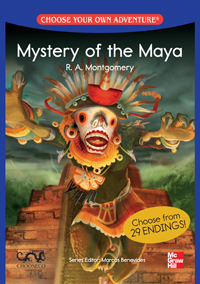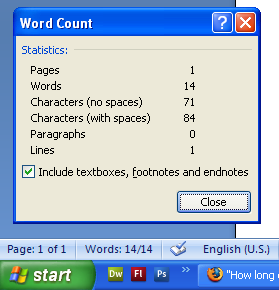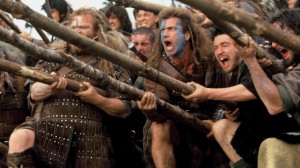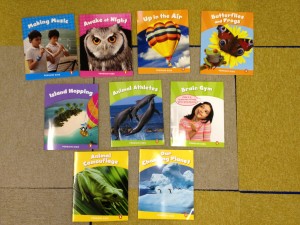curriculum EFL extensive reading graded readers language courses Language learning materials readers Reading teaching university
by sendaiben
6 comments
Choose Your Own Adventure readers -in class!
Today I am going to introduce a new activity I have been doing with extensive reading classes here at Tohoku University this semester. Our ER classes consist of approximately 45 minutes of silent reading and 45 minutes of supplementary activities including speaking, listening, and writing.
One activity that students enjoyed was reading some of the Choose Your Own Adventure readers in groups (I got the idea from Marcos Benevides).
Background Info
The Choose Your Own Adventure books (CYOA from now on) were popular when I was in school. They consist of books where the reader is given choices and the story develops differently based on those choices, up until an ending is reached. Some endings are good and some are bad. It’s kind of like a computer or role-playing game.
The CYOA readers are published by McGraw-Hill Education, and consist of 30 titles over three levels (500, 700, and 900 headwords). I used this in-class reading activity twice, once with Mystery of the Maya, and once with Cup of Death. Both are at the 500 headword level.
Procedure
The activity takes 30-35 minutes. First, introduce the concept of gamebooks to the students and walk them through the ‘read a page, decide on a course of action, go to the next page’ dynamic.
Assign the students to random groups (we found pairs and groups of three work best, as larger groups mean each student has too little to do). Explain that each group member will in turn read a page, the group will make the decision, and the book will be passed to the next member. This will continue until an ending is reached. If groups finish early they should go back and try to get another ending.
The teacher then reads the first page to the class before distributing one book to each group. Once a group has their book, they can start.
Results
We did this activity twice with about a dozen classes. Students actively read, listened, and discussed options for the whole time the activity went on. Many students enjoyed the activity and were clearly happy when teachers introduced the second book (three weeks after the first one). The highly structured nature of the activity makes it easy for students to participate.
Evaluation
This is a great activity to do two or three times a semester. It would be possible to base an entire course around reading CYOA books, but I suspect the novelty might wear off. Of course, as with any activity, not all students enjoyed it to the same extent. In terms of materials, one class set can be shared among several teachers.
The best thing about this activity is that it really brings out the meaning in the books: students have to understand the text in order to choose their next action.
Improvements
1. The content of each book in the CYOA series varies considerably. Our students had some trouble with the Mayan setting, so it might have been useful to pre-teach some of the background, the geography, and the history. This could be done in a few minutes. Going through the proper nouns in the book would also help students read more smoothly.
2. Doing the exercise in pairs gives more reading/speaking time to each student.
3. It is not necessary to have class sets of each book: the same activity could be done with each group/pair reading a different book (of course, pre-teaching and having the teacher read the first page would not be possible in this case). This would allow students to choose which book they wanted to read, possibly making it more interesting for them.
Conclusion
This was a very positive experience for my colleague and I, and for the students. It is likely to become a regular activity in our ER classes.
blogging expectations extensive reading facebook graded readers materials online resources readers school management
by sendaiben
2 comments
Graded Reader Word Counts
Right, this is the third and final post (for now) about graded readers and word counts. From now on, I will be posting about this issue only at the Facebook page I have set up to co-ordinate the various proposed campaigns.
http://www.facebook.com/GradedReaderWordCounts
I think as well as the boycott, it would be useful to encourage teachers to write to publishers directly, as well as create some educational resources aimed at informing publishers about the issue.
Thanks for all the support and suggestions so far, and hopefully see you on Facebook!
curriculum extensive reading graded readers materials readers school management university
by sendaiben
6 comments
More thoughts on the graded reader boycott
I really enjoyed reading all the replies to yesterday’s proposal. A few people thought that calling for a boycott was a bit harsh, but it was very interesting that so far not one person has offered a reason for publishers not to print word counts on graded readers.
My personal take is that some editors are not aware that word counts are a useful and, for some teachers and programs, essential tool.
I am going to proceed with the boycott. To assist in that effort and to help connect with publishers who are not yet aware of the issue, I am going to create a website listing various graded reader series in three categories:
- A Greenlist of series that clearly print accurate running word counts on books
- A Greylist of series that do not print word counts on books, but do make full and up-to-date word count information available on the Extensive Reading Foundation website
- A Blacklist of series that do not print word counts on books, and also do not make word count information available on the ERF website
I hope this will become a useful resource for teachers and institutions when they are choosing materials for their classes and programs. The site will be maintained and updated if conditions change (ie a publisher starts printing word counts on books, or makes the information available on the ERF site).
blogging expectations extensive reading graded readers materials readers school management
by sendaiben
12 comments
Let’s boycott graded readers that don’t print/publish word counts
Right, I have had enough.
Our graded reader program uses word counts to track student progress. I believe this is superior to using pages or books or time. It makes it easy to compare students across levels, and to standardize goals and progress.
Every year, I spend days searching for word counts, writing them in books, putting them on our website, and even counting words by hand because the publisher refuses to release the word counts for the book (why, Black Cat, why?).
Well, I’m not going to do that any more. I understand that each publisher is free to make editorial and design decisions, and not printing word counts on books is one of them. However, I am also free to decide which books I buy, and I would like to say publicly here that I will no longer be ordering graded readers that do not have word counts printed clearly on them. I have an unlimited budget here at Tohoku University, and a considerable one at Cambridge English, and from now on I will be using those funds exclusively to buy readers from publishers that listen to teachers when they say that they need the word counts on the books.
I would like to invite other teachers that use extensive reading and graded readers to join me. Please contact your sales rep/book distributor and let them know that you care about this issue. I’m guessing that we will see some changes fairly quickly if enough people get involved.
Are you with me? 😉
curriculum EFL eikaiwa extensive reading graded readers kids language courses Language learning materials Penguin Kids Readers readers reviews young learners: EFL graded readers Japan Penguin Kids Readers review teaching English
by sendaiben
2 comments
New Penguin Kids Titles
I first reviewed this series here.
Just to recap, this is a fantastic resource for young beginners who are just getting started with graded readers. The books are extremely attractive and have interesting content. The levels start very low at level 1 (200 headwords) and only go up in jumps of 200 from there up to level 6 (1200 headwords).
I received the new titles for this year last week. Unlike last year’s releases, which were all based on Disney titles, this year’s books are a mixture of new Disney material alongside non-fiction content.
I really like the non-fiction books. They have big, attractive photographs and are interesting. I tried them out with some students yesterday (just put them on the desk as they came into class and let them read before we started) and I had difficulty getting them to put the books down so we could start the class! Always a good sign.
If you have a reading library for children or teenagers this series is well worth a look, especially now that it has its full 12 books per level.





